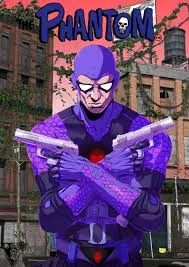I believe I have a much more productive and systematic way to help students from first grade through college become better writers and to help writing teachers become better teachers. The following discussion does two things:
1) it briefly analyzes the big problem--from first grade through college, students aren't being taught to write as well as society needs them to--and
2) it offers a conceptual and practical solution--a solution that has helped writers write better in the classroom and the workplace over the past 35+ years of my teaching....
This is a long post that will take you into territory that's unusual for those interested in workplace writing. Fair warning! I'm interested in everyday writing as an everyday Mindfulness Practice. So here goes....
Answer interesting questions interestingly!
That's the trick! (...to making your workplace writing impressive)
You probably assume I'm talking about something easy, a quick TRICK, something you can learn in a flash, a quick solution to a difficult problem. Presto! ...as if by MAGIC. These days, how we all crave as many quick FIXes as we can get!
"Audience," we writing teachers tell our students, "is one of the most important considerations for a writer doing business or technical writing"...or any kind of prose writing, for that matter. We greatly emphasize this essential building block of writing, telling our students
- Knowing or anticipating who will be reading what you have written is key to effective writing.
- Knowing your audience—their general age, gender, education level, religion, language, culture, and group membership—is the single most important aspect of developing your essay.
- When writing for business, we need an audience-centric approach and must create our message in a language appropriate to audience needs.
I realize this advice sounds perfectly familiar to any writing teacher and to anyone who ever sat through a writing class in college. But this is the biggest mistake we writing teachers make....
Writing, according to Aristotle, has three purposes: to inform, to persuade, and to delight (entertain). I imagine these purposes on a line. To the far left is writing to inform. Just to the right of that is writing to persuade. And at the extreme right is writing to delight and entertain.
While I’ve dedicated much of my working life to the first two purposes, I’m not unacquainted with the far extreme of writing to delight. This blog post celebrates that far extreme where words transform into art. But specifically, this post is in honor of the Nobel Prize-wining poet Derek Walcott, my teacher, who died on Friday (March 17, 2017) at 87….
We all tend to follow the path of least resistance. That doesn’t mean we don’t ever work hard. Sometimes working to grow a business consumes your attention 24/7…but there’s no other path to success. But, as Mark Cuban reminds us in his surprisingly brilliant little book, How to Win at the Sport of Business (https://www.amazon.com/How-Win-Sport-Business-Can-ebook/dp/B006AX6ONI), whatever you’re selling will fail if it doesn’t offer the customer the path of least resistance.
And that’s why my HOCs & LOCs approach to writing—as brilliant as it is, as much as students whom I force it on end up loving it and people in my writing seminars who have paid to hear what I have to say about writing love it and retain its main ideas over many years—is having a really tough time catching on. My bad!
Hi,
I wanted to talk to you now after the first 3 weeks of class about 4 things that are very important to your success moving forward in our class. So in this rather long email, I’ll talk about the following:
By definition, “editing” appears to be a reactive exercise—we have a text and edit it, finding and fixing weaknesses and whoppers. But some of the most important, time-saving editing editors can do should come before any words are written, or, to be more precise, before any drafts have begun. How does that work?








